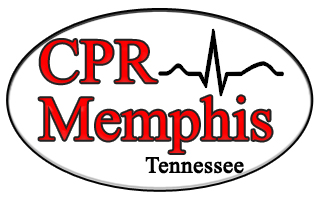Staphylococcus aureus
UNKNOWN LAB REPORT
General Microbiology
Fall 2013
INTRODUCTION:
Bacteria exist in millions and contain different properties. The structure of a bacterium can determine its pathogenicity and virulence. Each bacterium reacts differently in different environments. These factors are helpful in diagnosing and treating diseases or producing antibiotics. The methods used in this study are stated in the laboratory manual.(1).
MATERIALS AND METHODS:
The lab instructor assigned unknown. It was previously stated one was gram positive and the other gram negative. To begin, the unknown was inoculated onto a nutrient agar plate using the streak plate method and incubated at room temperature (37 Celsius) in order to grow colonies. One of the two bacteria grew. A gram stain was performed to determine how to grow the second bacteria. A MacConkey Agar plate selects for gram negative which allowed growth. The gram stain confirmed a negative gram reaction.
Further testing was guided by an unknown chart. The chart listed the possible bacteria along with the expected results of each one. To test the ability of the gram positive to ferment mannitol, the bacterium was inoculated onto a Mannitol Salt Agar plate and broth tube. A urea broth tube was also used on this bacterium to be certain about the results. Both tests were recreated twice.
The MacConkey Agar plate also tests for the fermentation of lactose. The ability to reduce sulfur and ferment glucose was verified by stabbing a Kligler Iron tube. Lastly, a test was performed with a urea broth tube as the deciding factor between the last two possibilities for the unknown.
RESULTS:
The gram positive bacterium presented positive results when grown in a Mannitol Salt Agar plate as the color changed to yellow. The urea broth tube also changed to pink indicating the bacterium contained the enzyme urease. After completing both tests twice, the results remained the same.
The Urea broth test caused a color change from yellow to pink. Both Kligler Iron tests resulted in a black color change and a yellow butt.
Table 1 and Table 2 list the test, purpose, and results.
All of the following tests were performed on the gram positive:
- Mannitol Salt Agar
- Urea
- Mannitol broth
All of the following tests were performed on the gram negative:
- Kligler Iron
- Urea
- Hydrogen sulfide
Table 1: Gram Positive Tests and Results
| TEST | PURPOSE | REAGENTS | OBSERVATIONS | RESULTS |
| Gram Stain | To determine the Gram reaction of the bacterium | Crystal Violet, Iodine, Alcohol, and Safranin | Purple circles | Gram positive cocci |
| Mannitol Salt Agar | To determine the ability of a bacterium to ferment mannitol | None | Plate turned yellow | Ferments mannitol, acidic |
| Urea Broth Test | To determine the presence of urease | None | Color changed to pink | Breaks down urea |
| Mannitol Broth Test | To determine the ability of a bacterium to ferment mannitol | None | Color changed to yellow | Ferments mannitol |
Table 2: Gram Negative Tests and Results
| TEST | PURPOSE | REAGENTS | OBSERVATIONS | RESULTS |
| Gram Stain | To determine the Gram reaction of the bacterium | Crystal Violet, Iodine, Alcohol, and Safranin | Red rods | Gram negative rods |
| Kligler Iron Tube Test | To determine if the bacterium can ferment glucose/lactose and its ability to reduce thiosulfate to hydrogen sulfide | None | Black tube with a yellow butt | Reduced thiosulfate to hydrogen sulfide and fermented glucose |
| Urea Broth Test | To determine the presence of urease | None | Color changed to pink | Breaks down urea |
| MacConkey | To determine ability to ferment lactose | Bile Salts and Crystal Violet | Growth and color stayed the same | Does not ferment lactose |
CONCLUSION:
The results for the gram positive were contradictory. Out of the unknown choices, it was between Staphylococcus aureus and Staphylococcus epidermis. The lab instructor helped to narrow down the remaining bacterium to S. aureus. The bacterium should have been negative for urease and positive for mannitol. A urea broth test identified the gram negative bacterium as Proteus vulgaris. The Kligler Iron tube showed the bacterium was capable of fermenting glucose. The tube became black indicating it could reduce thiosulfate to hydrogen sulfide.
S. aueus is commonly referred to as Staph. It is one of five most common causes of infections that originate in a hospital. The bacterium is non-motile and a facultative anaerobe. It requires oxygen or the production of lactic acid to grow (2). Transmission occurs through sneezing, touching contaminated objects, and saliva. A healthy person can live with this bacteria and not get ill where as a person with an incompetent immune system can suffer life threating illnesses. It can cause minor skin infections such as pimples to blood infections (3). Methicillin- Resistant Staphylococcus aureus (MRSA) is a strain that is resistant to methicillin. Methicillin is designed to be resistant to penicillinase. The rate at which the bacterium evolves has led to alarming healthcare issues.
REFERENCES:
- Lab Manual for General Microbiology; 2011
- Larsen, Rachel, and Kit Pogliano. “Staphylococcus Aureus.” – MicrobeWiki. 22 Apr. 2011. Web. 01
Dec. 2013. <http://microbewiki.kenyon.edu/index.php/Staphylococcus_aureus>.
- Mandal, Ananya, Dr. “What Is Staphylococcus Aureus”. News Medical. Web. 01 Dec. 2013.
<http://www.news-medical.net/health/What-is-Staphylococcus-Aureus.aspx>.





